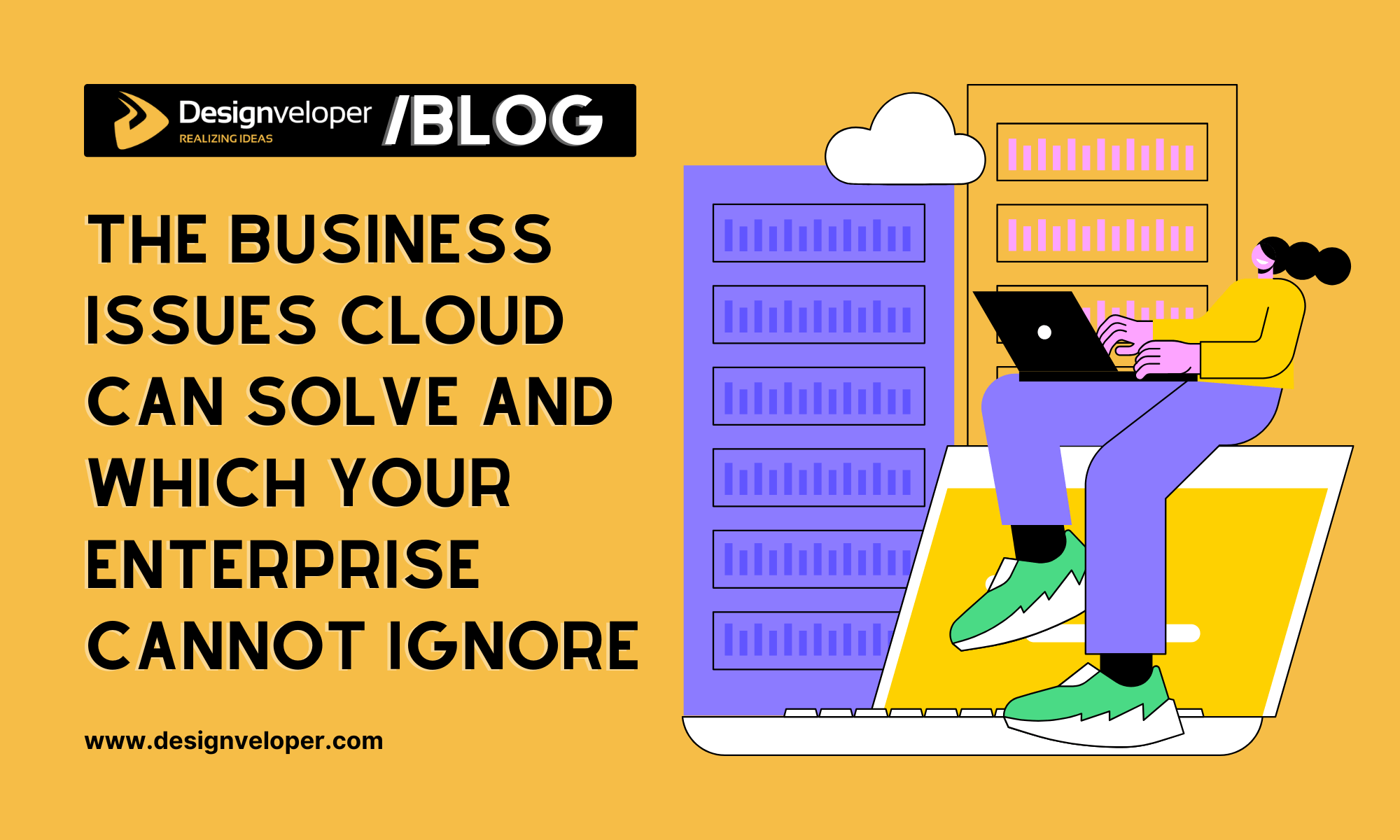The Business Issues Cloud Can Solve and Which Your Enterprise Cannot Ignore

Cloud technology is nothing new; in fact, it is so ubiquitous nowadays that it can be found across most business environments. Yet, that doesn’t mean it is used to its full potential, or that its features are consistently implemented in such a way as to solve the challenges each enterprise is dealing with. The possibilities of driving value are huge when it comes to the cloud, as the technology can implement and run powerful AI tools, foster machine learning, and integrate web3 features, all of which are part of the tech developments set to revolutionize the business world in the upcoming years.
When you have cloud computing in your own company, you must utilize it in a way that is entirely customized to your goals and requirements so that you’re proactive about growing your brand. Efficiency is key, and the cloud can provide it for you if you learn how to make the most of what it has to offer.

Cost efficiency
Using your money in a sustainable way is one of the fundamental parts of running a successful business. You must have a plan and stick with it in the sector, and a comprehensive budget that addresses all expenses, fees, and costs is an integral part of that. Saving money whenever you can will provide your corporation with a lot more stability and give you more room for movement in case you need to change things, since you’ll have the safety net of more funds to rely on.
Cloud computing can decrease costs quite significantly, ensuring that funds are fairly allocated to each workload and application. The performance costs, security, and compliance are all part of the reduction as well to guarantee the investments remain optimal and aligned with organizational requirements. With cloud deployment, every single workload is unique, but its requirements evolve over time as well. You must identify performance thresholds and the operational metrics to optimize your cloud design as your business continues to evolve.
You will require an in-depth assessment in this regard, especially when you’re planning to move your company forward and expand the operations. You need to check if your cloud infrastructure is ready to scale, and if the answer is negative, then you need to upgrade the solutions immediately. Rapid shifts lead to changes in the needs and requirements your infrastructure must meet, so rooting future developments in practical analysis will allow you to come up with a tailored approach.
Operational agility
The concept of business agility refers to a corporation’s ability to thrive in the digital era due to its ability to respond to market changes very quickly and adapt to emerging opportunities as they appear. Since everything moves fast in today’s business world and your competitors are constantly looking for ways to improve their products and services, you also need to come up with innovative solutions that allow you to keep up and carve a place for yourself in your specific industry niche.

Ensuring and maintaining business agility is one of the primary reasons why business owners want to adopt cloud functionality, as pursuing cloud initiatives can help them achieve it. The cloud offers the ability to utilize computer resources and scale in a manner that aligns with shifting corporate needs, allowing you to increase output and then scale back if or when the changes are no longer required. Not having to manage and pay for resources you don’t use is good for your resources as well, so you save both time and money.
Working with a specialized service like Intercept can help you maximize your cloud’s potential so that you are able to migrate, optimize, and develop your Azure environment to make it into the most secure and scalable version of itself. Agility is also about deploying new solutions with greater ease and rapidity, and you will have no problem doing that when it is a team of experts managing these tasks.
New products and markets
There’s no denying the fact that the traditional software deployment cycle has served a large number of enterprises, but it has its drawbacks as well, particularly the fact that the operations are fairly lengthy and time-consuming. All products need to go back and forth between development and deployment before they’re finally ready for launch. The cloud is much more efficient, with the focus being on building, testing, and releasing the products instead of worrying about infrastructure and maintenance.
Technology benefits the manufacturing sector as well, with the procedures digitized to obtain “smart manufacturing”. Digital services like the cloud account for a significant portion of the inputs in this market niche, and their influence is predicted to continue growing in the upcoming years, a revolution that will make these complex procedures much more straightforward. Expanding to a new market, an area that many companies struggle with, can become more accessible via the cloud as well.
In the past, businesses needed to hire employees, buy servers on the premises, and hire office space just to get started. Now, it is fairly simple to set up a virtual office in an entirely different location for a very affordable sum, and employees can be hired to work remotely, with online training also provided. At the most, you might have to mail a work laptop and business phone to the workers for added security. Regardless, adopting this approach allows you to save tens of thousands of dollars, which can then be allocated to procedures that require more funding.
Sustainability
Many companies are starting to be more focused on sustainability, but it isn’t a simple task for the corporate environment, which is known for needing a lot of resources to function. Cloud centers can be integrated into a sustainable business environment since they require less space and infrastructure. If the number of data centers from around the world is reduced, a much smaller number of hardware parts have to be manufactured, cooled, or heated, and fewer of them will be discarded as well, reducing the overall global footprint.
Some companies have also moved to green cloud solutions, which are powered by 100% renewable energy to minimize the tech’s environmental impact as much as possible.
If you’re a newcomer to the business world, you must definitely look into cloud computing. This well-known technology can significantly improve things, but only if you learn how to use it well.
Conclusion
At Designveloper, we’ve seen firsthand how cloud solutions transform the way enterprises address their most pressing business challenges—from streamlining operations and enabling remote collaboration to scaling infrastructure without heavy capital investments. Ignoring these opportunities means risking inefficiency, higher costs, and lost competitive advantage. With our expertise in software development, consulting, and cutting-edge cloud integration, Designveloper empowers businesses to harness the cloud strategically, turning complex challenges into sustainable growth. The future belongs to agile, cloud-driven enterprises—and we’re here to help you get there.

















































